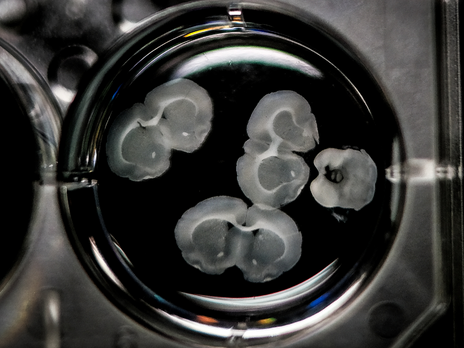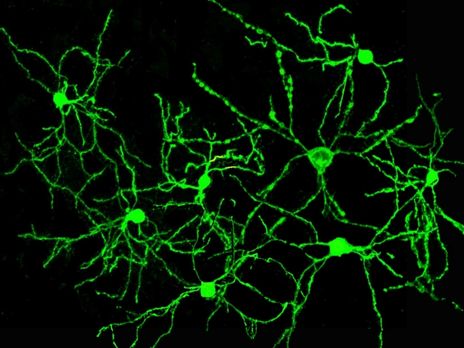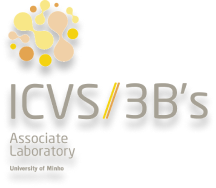
Neuronal circuits of reward and aversion
Since the moment we wake up, we are continuously flooded with sensory information of variable relevance. Therefore, our brains evolved to filter information…

Currently a Post-doctoral Researcher in the Reward Aversion Lab, I am a neuroscientist studying the reward and aversion network. My work is focused on the role of opioids system in the encoding of natural rewards. My previous post-doctoral research focused on identifying the role of the mGlu4 glutamatergic receptor in modulating autism-sensitive behaviors in mice. By using RNAscope® hybridization, viral knock-down injections and photopharmacology, I evidenced the therapeutic potential of facilitating mGlu4 activity in the Fmr1 knockout mouse model of Fragile X syndrome and elucidated the neural mechanisms involved in such beneficial effects. During my PhD, I studied the beneficial effects of a life-long olfactory enrichment on the spatial and olfactory learning and the behavioral flexibility in juvenile, middle aged and aging mice. The behavioral results have shown that the performances in the spatial and olfactory learning were maintained in the middle aged and aging mice which received a life-long olfactory enrichment. These beneficial effects were correlated with an increase of NA innervation in different brain regions.

Currently a Post-doctoral Researcher in the Reward Aversion Lab, I am a neuroscientist studying the reward and aversion network. My work is focused on the role of opioids system in the encoding of natural rewards. My previous post-doctoral research focused on identifying the role of the mGlu4 glutamatergic receptor in modulating autism-sensitive behaviors in mice. By using RNAscope® hybridization, viral knock-down injections and photopharmacology, I evidenced the therapeutic potential of facilitating mGlu4 activity in the Fmr1 knockout mouse model of Fragile X syndrome and elucidated the neural mechanisms involved in such beneficial effects. During my PhD, I studied the beneficial effects of a life-long olfactory enrichment on the spatial and olfactory learning and the behavioral flexibility in juvenile, middle aged and aging mice. The behavioral results have shown that the performances in the spatial and olfactory learning were maintained in the middle aged and aging mice which received a life-long olfactory enrichment. These beneficial effects were correlated with an increase of NA innervation in different brain regions.
Role of central mGlu4 receptors in controlling autism-sensitive behaviors.
Claire Terrier, Juri Aparicio, Ingrid Wagnon, Isabelle McCort, Pascale Koebel, Paola Rossolillo, Ingrid Ehrlich, Francine Acher, Cyril Goudet, Jérôme Becker*, Julie Le Merrer*, (in prep)
Evidence for tilted striatofugal balance and beneficial effects of facilitating mGlu4 receptor activity in the Fmr1 null mouse model of Fragile X Syndrome.
Claire Terrier, Fani Pantouli, Fanny Malhaire, Jorge Gandia, Isabelle McCort, Déborah Jaccaz, Alexis Bailey, Francine Acher, Amadeu Llebaria, Cyril Goudet, Jérôme Becker*, Julie Le Merrer*, (in prep).
Long-run olfactory enrichment induces non-olfactory cognitive benefits, noradrenergic plasticity and brain network remodeling in aged mice.
Claire Terrier*, Juliette Greco-Vuilloud*, Matthias Cavelius, Marc Thévenet, Nathalie Mandairon, Anne Didier and Marion Richard, (in prep).

Since the moment we wake up, we are continuously flooded with sensory information of variable relevance. Therefore, our brains evolved to filter information…

Through evolution, animals gained the remarkable ability to respond with sub second precision to environmental stimuli and to learn to associate those with positive or negative outcomes…



Phone: +351 253 604 967
Fax: +351 253 604 809
Email: icvs.sec@med.uminho.pt
Life and Health Sciences
Research Institute (ICVS)
School of Medicine,
University of Minho,
Campus de Gualtar
4710-057 Braga
Portugal

Copyright ©2022 ICVS. All Rights Reserved



Copyright ©2022 ICVS. All Rights Reserved
Life and Health Sciences
Research Institute (ICVS)
School of Medicine,
University of Minho,
Campus de Gualtar
4710-057 Braga
Portugal



Copyright ©2022 ICVS. All Rights Reserved
Life and Health Sciences
Research Institute (ICVS)
School of Medicine,
University of Minho,
Campus de Gualtar
4710-057 Braga
Portugal

